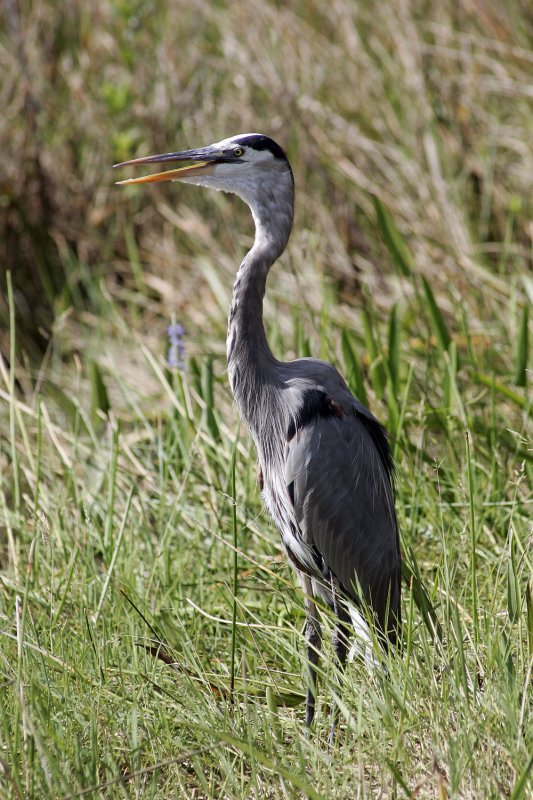A Great Blue Heron at the Royal Palm area of the Everglades National Park, as the park celebrates its 60th birthday this week as Deputy Secretary Lynn Scarlett, of the Department of the Interior attends the celebration, in Florida City, Florida on December 8, 2007. (UPI Photo/Michael Bush) |
License Photo
WEST PALM BEACH, Fla., Jan. 14 (UPI) -- The subtropical Florida Everglades wetlands are still deteriorating a decade after Washington began a multibillion-dollar plan to restore them, advocates say.
The Everglades, a victim of a half-century of environmental damage, remains unhealthy, with few species of wildlife other than birds still there and a growing number of invasive species like iguanas, Brazilian pepper plants and Australian pine trees, retired biologist Allen Trefrey told The Palm Beach (Fla.) Post.
Trefrey was part of a flotilla of 12 researchers and volunteers who kayaked down South Florida's 12-million-acre "river of grass" to call attention to its failing health.
"We wanted to bring big visibility to the plight of the Everglades," said John Marshall, chairman of the Arthur R. Marshall Foundation, which champions Everglades restoration and funded the trip.
The flotilla members also collected water samples to measure water quality, foundation Executive Director Josette Kaufman said.
Ten years ago a $7.8 billion project, split between the federal government and Florida over 36 years, promised to restore the Everglades, whose ecosystem lawmakers ranked with that of the Mississippi River, the Grand Canyon and the redwood forests of California.
The project has since shrunk in scope, in part because Congress failed to match Florida's commitment of more than $2 billion, The New York Times reported.
At the same time, the project failed to halt the wetlands' decline because of bureaucratic delays, a lack of financing from Congress and overdevelopment, a 2008 study found.
The study by the National Research Council, required by Congress, warned the Everglades was quickly reaching a point of no return.
Without "near-term progress," more species will die off "and the Everglades ecosystem may experience irreversible losses to its character and functioning," it said.















